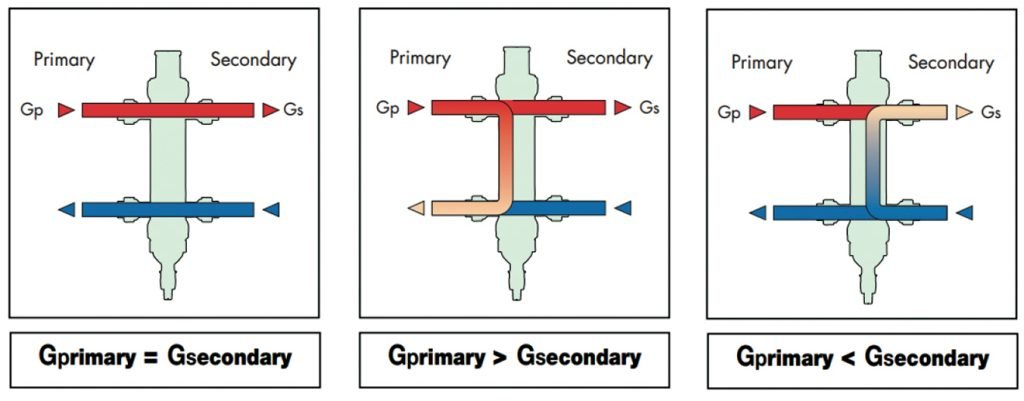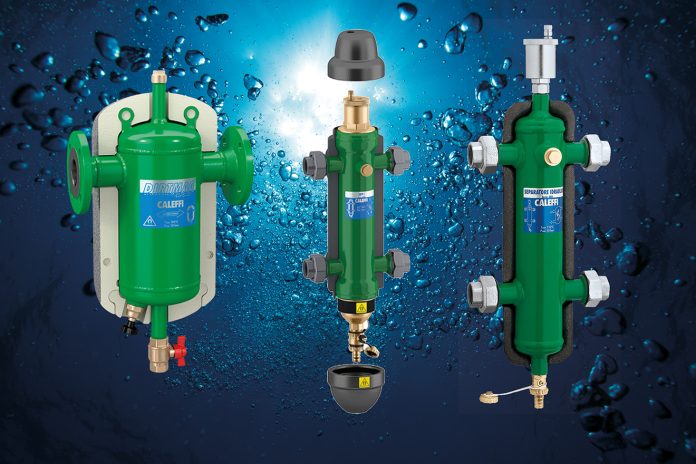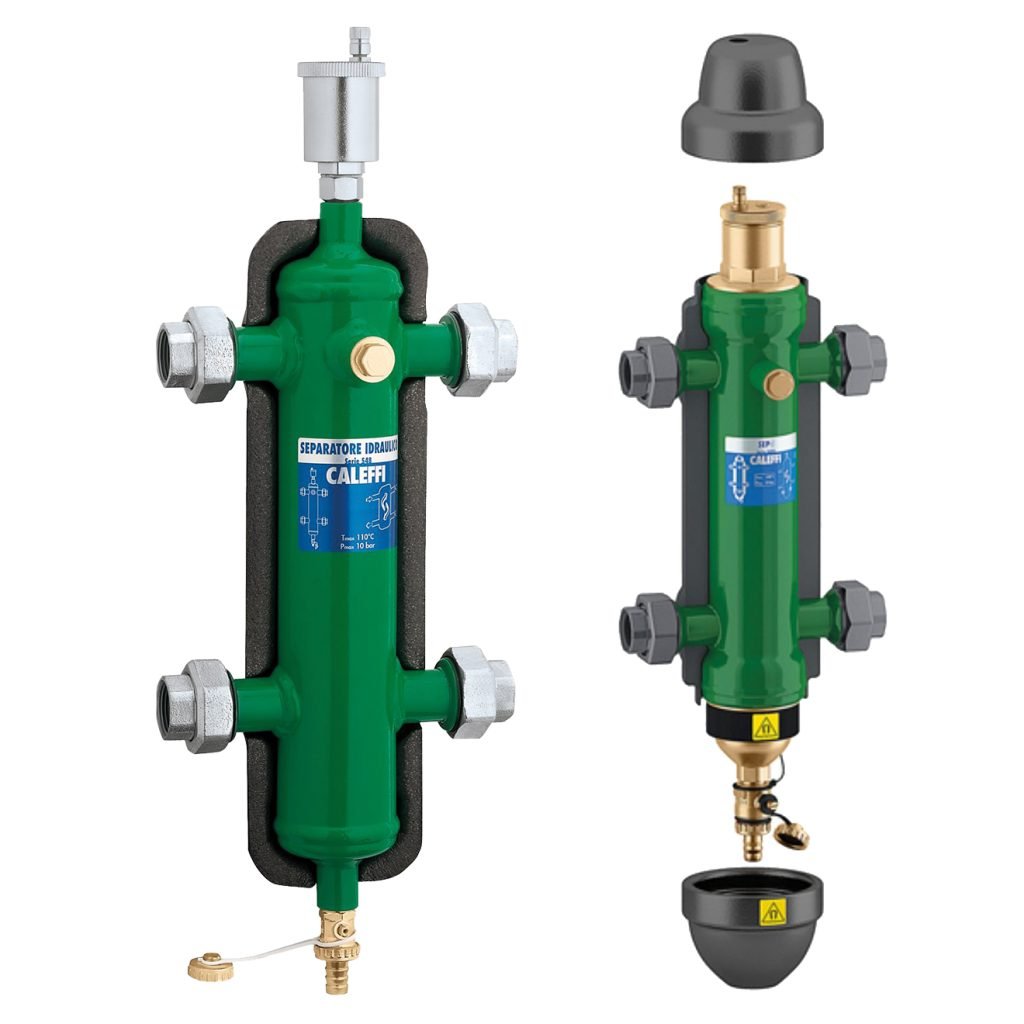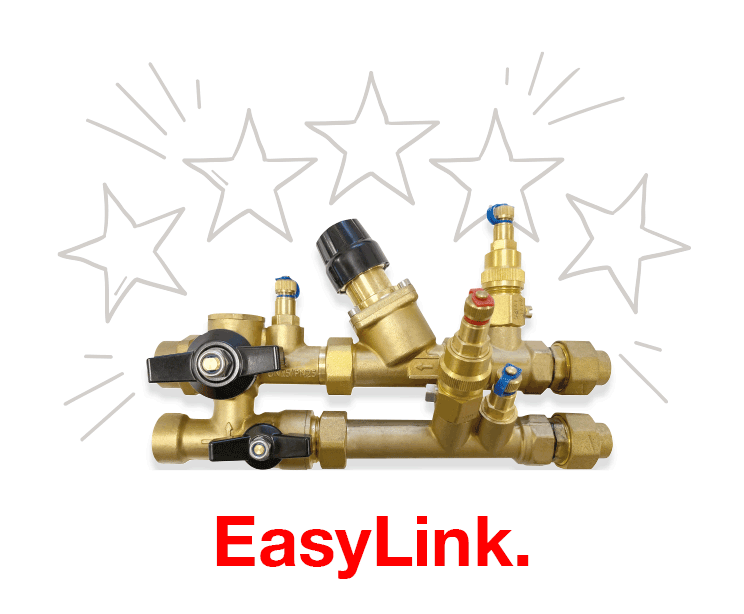Many hydronic systems use compact boilers as their heat source, with these boilers offering much higher flow resistance than cast iron boilers.
If such a boiler is simply substituted for a low flow resistance boiler, problems are likely to develop, most notably interference between simultaneously operating pumps.
The designer of such a system might assume that each zone circuit develops a flow based on the flow resistance of its piping and the circulation pump in that circuit. In essence, this thinking treats each zone circuit as if it was a stand-alone circuit, unaffected by its neighbouring circuits.
This oversimplification ignores the fact that the total flow of all zone circuits must pass through the high resistance heat source. The latter will act as a flow bottleneck and significantly reduce the flow within each zone circuit.
The more zone circuits that operate at one time, the worse the bottlenecking effect. The resulting drop in flow through individual zone circuits may create underheating, which will likely lead to complaints of inadequate heat delivery in some zones.
To solve this issue, a designer should opt for hydraulic separation. When hydraulic separation between circuits is present, the designer can correctly think of each circuit as if it were a stand-alone entity and design it accordingly. This not only simplifies system analysis, but also prevents the previously described flow interference problems.
Hydraulic separation and operating principles
When a single system contains a primary production circuit with its own pump/pumps, and a secondary user circuit with one or more distribution pumps, operating conditions may arise in the system whereby the pumps interact, creating abnormal variations in circuit flow rates and pressures.
The hydraulic separator creates a zone with low head loss, which enables the primary and secondary circuits connected to it to be hydraulically independent of each other. The flow in one circuit does not create a flow in the other if the head loss in the common section is negligible.
In this case, the flow rate in the respective circuits depends exclusively on the flow rate characteristics of the pumps, preventing reciprocal influence caused by their connection in series. Therefore, using a device with these characteristics means that the flow in the secondary circuit only circulates when the relevant pump is on, permitting the system to meet the specific load requirements at that time.
When the secondary pump is off, there is no circulation in the secondary circuit; the whole flow rate produced by the primary pump is by-passed through the separator.
With a hydraulic separator, it is therefore possible to have a production circuit with a constant flow rate and a distribution circuit with a variable flow rate. Such operating conditions are typical of modern heating and air-conditioning systems.
Finding the right separator
The Caleffi 548 and 549 series hydraulic separators perform similarly to a low loss header, keeping the primary and secondary circuits connected hydraulically yet able to function independently from each other.
They can be used on both hot and chilled water systems. The separators are supplied with an air vent assembly to permit automatic discharge of air in the circuits, along with a dirt separation element and drain valve for removing any impurities in the system.
The hydraulic separators reduce flow velocity in the vessel, which allows for two secondary functions – air removal and dirt removal – in one device. Three-in-one hydraulic separators make air removal and dirt removal primary functions, along with hydraulic separation, with no added piping connections or installation costs.
Magnetic dirt removal adds a fourth function and is especially effective for older system retrofits which can contain a high amount of magnetic iron and steel particles. These functions are available up to 50mm in our SEP4 549 series combination hydraulic separators.
The solution from Altecnic
The Caleffi flanged 5466 range is a powerful magnetic and dirt separation unit with the option to fit a high-capacity air vent, all within a compact and easily serviceable assembly. This flanged range complements existing devices up to 2” thread and allows Altecnic to offer flexible solutions across a wide range of installations.
The Caleffi 548 and 549 series hydraulic separators bring a combination approach to any header situation with the ability to provide a four-port threaded or flanged device from 25mm up to 150mm, plus both a dirt and air removal function in addition to the new integral magnetic version up to 2” and all with a dedicated insulation shell.
The three additional ranges of Caleffi separators are now available for immediate delivery from Altecnic’s UK HQ – the 548 hydraulic separator, the SEP4 combination 549 hydraulic separator and the 5466 Dirtmag – steel dirt (& air) separator.
Each separator has an epoxy resin-coated steel body and is supplied complete with a bespoke insulation shell.
Possible hydraulic balance scenarios…

For more information, contact Chris Reilly, Country Manager for Ireland, on
+353 (0)85 215 2288 or e-mail chris.reilly@altecnic.co.uk or visit the website at www.altecnic.co.uk












